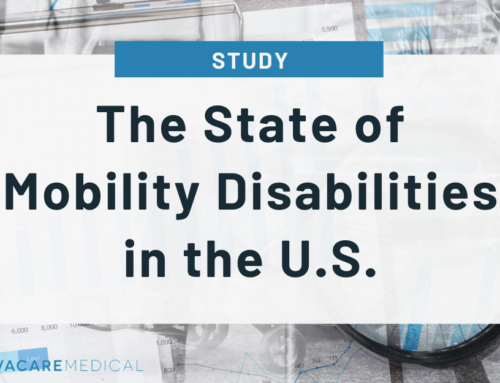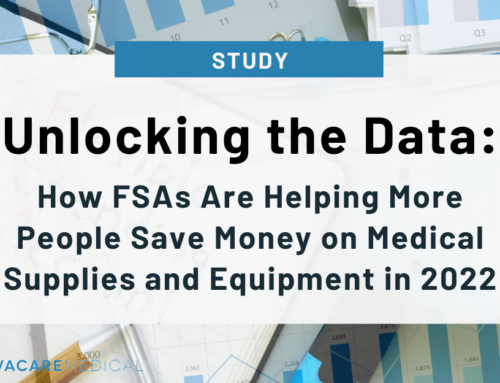It is well-known that athletes wear super-tight clothes, sleeves, and gloves designed to reduce discomfort, aid muscle healing, and improve performance. Compression is utilized to treat a variety of medical issues in addition to helping athletes. So, how can compression aid in edema reduction? Compression garments, such as socks, gloves, and stockings, are widely used to treat lymphedema and reduce discomfort and swelling. Compression sleeves, splints, braces, and clothes can aid with pain and swelling caused by repetitive stress injuries, carpal tunnel syndrome, arthritis, and other disorders.
What exactly is compression?
“To push together” is what the word compression signifies. Compression clothes “squeeze” the body. Graduated compression provides the most compression in the part of the garment furthest from the heart and the least compression in the section closest to the heart. In compression socks, for example, the ankle receives the most compression while the calf receives the least.
Which compression products could be beneficial?
There are many alternatives for the product you can use for your injury. You need to choose the right one to help recover your ankle, elbow, feet, or wrist injury. These are some examples of compression garments that are beneficial for you.
A splint or brace that relieves discomfort and supports the wrist during activities may be beneficial if you’ve sprained your wrist or have arthritis or tendonitis in your hand. The Protecta-Sleeves help maintain the wrist by applying regulated compression to the muscles and tendons without impeding circulation.
Plantar fasciitis, which causes scorching and stabbing pain across your foot’s bottom, may benefit from compression. By boosting circulation, wearing a compression sleeve on your foot or a compression dress sock helps your “fascia” recover faster. The CURAD Compression Dress Socks relieve pain and can be worn day or night.
Suppose you have arthritis in your knee, runner’s knee, or other knee instability conditions. In that case, the Sport-Aid™ Knee Sleeve can help enhance circulation and reduce swelling and irritation by providing medical-grade compression.
Importance of compression therapy with healing
Compression therapy applies mild pressure to the leg via compression stocking, socks, boots, or bandages.
Doctors have recommended compression therapy for thousands of years, dating back to the Greek physician Hippocrates. Compression treatment benefits are still being discovered by modern science.
- Compression shortens the time for chronic wounds to heal.
Chronic wounds are injuries that do not recover. Circulation and healing are aided by external pressure.
Compression wrap therapy uses controlled pressure to speed up the healing of chronic wounds. Extra fluid is pushed out of the area by the pressure, which improves blood flow. It speeds up the healing process.
- Reduced muscle tiredness
Our muscles become inflamed, and fluid builds up in the muscles when we use our physical therapy supplies, especially during strenuous workouts or exercises.
We may begin to feel muscle tiredness. Compression relieves muscle fatigue by compressing or restricting the muscle, reducing the fluid that can build up in the muscles.
- Reduced swelling and inflammation
Swelling and inflammation can be reduced using compression therapy. By boosting the flow of blood and other fluids, applying regulated pressure to an injury helps to minimize swelling and inflammation.
Choosing the right compression dressing will help the swelling and inflammation reduction.
- Increases cardiac blood flow
Compression therapy aids in the improvement of blood circulation throughout the body. It helps blood flow from your extremities back to your heart, where it is oxygenated.
It works by increasing blood flow in your legs while improving blood flow to your heart. It also strengthens your veins and promotes blood flow throughout your entire body. You can check your blood pressure by using blood pressure monitors after the compression therapy to see results.
- Varicose veins: diagnosis and treatment
The valves that you can see on the leg’s vein allow blood to flow in one direction, which helps pump blood back up into the heart. These valves can occasionally fail, allowing blood to collect in the veins. Varicose veins, swollen and twisted veins, and a heavy, achy feeling in the legs are possible side effects.
Varicose veins can provoke a lot of discomfort and swelling. Therefore compression socks and stockings can assist. Compression therapy may assist in avoiding developing new varicose veins after the varicose vein treatment.
- Diabetes
Living with diabetes necessitates special attention to your feet. This illness can cause blood vessel damage in your legs and feet, resulting in circulation issues, swelling, and an increased risk of infection.
Compression socks can assist with diabetic foot maintenance and recovery if you have diabetes sores that take a long time to heal.
- Leg injuries and operations
A leg injury or surgery raises your risk of developing deep vein thrombosis or blood clots in your legs. Blood clots are dangerous because they can break loose and move to your lungs, posing a life-threatening issue.
Anyone can develop this issue, but trauma and surgery enhance your chances. Knee and ankle support helps you recover from leg injuries and aids with blood flow to avoid blood clots.
- Healing of wounds
Venous ulcers are injuries that develop on the lower leg. You may develop this disorder when you have chronic venous insufficiency, which causes too much pressure in a vein.
Varicose veins form as blood pools in your veins, causing pressure to build up. This pressure eventually leaks out of the veins and onto the surrounding tissue, causing skin damage and ulcers. Compression garments greatly help reduce the pressure on the vein caused by venous insufficiency.
Final Thoughts
With compression therapy, you can effectively treat wounds, injuries, swelling, and leg ulcers. It improves blood flow, which aids in the healing of ulcers. Compression wrap therapy minimizes these injuries’ symptoms like pain, edema, and itching during the healing process.
Consider acquiring a prescription for medical-grade compression socks if you wear them frequently. If you experience any negative effects, such as bruised or broken skin, stop wearing the socks and visit us here at AvaCare Medical. We provide great assistance to those who need us! For more information, please email us here at info@avacaremedical.com or contact us here at 1-877-813-7799.



